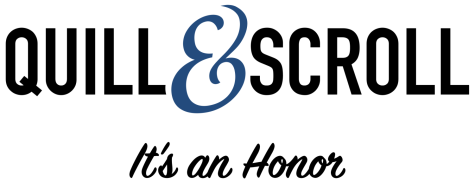THE WEEKLY SCROLL
September 2, 2021
The Lede
Hurricane Ida
Powerful storm leaves swath of destruction from Louisiana to New York
Hurricane Ida hit the Gulf Coast states this week with powerful winds that forced the evacuation of many Americans from their homes, disrupting lives — school included — that have already been disrupted the past 18 months by the pandemic.
On Wednesday night, the remnants of the storm pounded New York City with powerful storms and flooding that have left nine persons dead in the NYC metro area.
Here’s what you can do:
There are at least a couple of ways to use a story such as this for your school publications:
- It’s a climate story because most climatologists attribute these record-breaking storms to human-induced climate change. You may not be in the line of hurricanes, but your area will probably be impacted in some way be climate change and climate refugees. Who are the climatologists in your area who can address this? (Note: Meteorologist and climate scientist are two different professions. Meteorologists generally predict the weather for a week out or slightly longer. Climate scientists predict climate trends over longer periods of time using much larger data sets.)
- It’s a human story, especially if your state or town is trying to cope with the impact of this storm and prepare for future storms of this magnitude.
Texas abortion law
U.S. Supreme Court upholds ban on abortions after six weeks of pregnancy
A deeply divided U.S. Supreme Court this week upheld a controversial Texas law that bans abortions after the sixth week of pregnancy, the time when a fetal heartbeat can be detected by ultrasound, but long before most people learn that they’re pregnant.
The law also allows any citizen to file suit in court against someone who facilitates or performs an abortion after six weeks. That means anyone who gives a ride to a clinic or anyone who helps pay for an illegal abortion will be legally liable for their actions.
Abortion proponents are calling it a virtual ban on all abortions in the state, the second-most populous in the U.S. Anti-abortion activists hope the law can be exported to other states that are dominated by conservative legislatures.
Here’s what you can do:
The most obvious local angle, of course, is a reaction piece from both pro-abortion and anti-abortion activists in your community that includes expert opinion from doctors that specialize in pre-natal care and politicians who might have a say in whether your state copies Texas’ law.
But another angle would be an explanation of how the U.S. Constitution allows for some states to grant more freedom to its residents than do other states. It’s true of marijuana laws, speed limits and other issues.
As someone who once taught English as a Second Language to immigrants and new U.S. citizens living in Colorado, I know that those students always wanted to know how Colorado could have legal marijuana when other states didn’t. They were equally perplexed to learn on Election Night 2016 how the candidate with the fewest votes could win the U.S. Presidency.
So if you’re squeamish about opening the abortion can of worms in your school’s publications, use this is a jumping-off point for discussion how U.S. laws can differ wildly from one part of the country to another.
Freedom School
Pulitzer winner brings after-school program to her Iowa hometown
Nikole Hannah-Jones is taking her “1619 Project” and building on it to create an after-school program for low-income public school students in Waterloo, Iowa, the Pulitzer Prize-winning journalist’s hometown.
The Freedom School will be a five-day-per-week program where students supplement their regular classes by learning about U.S. history by focusing specifically on the Black experience. The program is free to all students, though it will specifically reach out to Black students who are having trouble reading.
“I think this intervention is necessary because we can just look at the test scores of Black students, particularly low-income Black students in Waterloo, as compared to white students, and see there’s a failure happening somewhere,” Hannah-Jones said.
Iowa is one of several states to ban material that the legislature contends stokes racial animus. The “1619 Project” has been a specific target for such legislation, so the independent Freedom School project is a work-around to avoid breaking the controversial law.
Here’s what you can do:
The program is intended to help any student interested in learning more about Black history, but it specifically wants to address the disparity in test scores in the Waterloo district.
If you choose to look at potential racial disparities in your school district’s test scores, keep in mind that this is a very difficult subject to report on and write about. Many factors influence how students perform in school and on standardized tests, but educational research has found that the top factors are the levels of educational attainment of a student’s parents, along with the the socio-economic status of parents.
So any good story about this issue will include more than just data. A good story will reach out to experts on poverty and its impact on learners of all racial backgrounds and ethnic identifiers. It will also tell personal stories of students and their experiences with learning U.S. history and whether they feel it adequately reflects their own backgrounds and experiences.
Finally, you’ll need to lean on your adviser and other professionals in your building to help you make good decisions about your word usage in the story.
It’s An Honor
News Media Evaluation Results announced today!
Check out our Twitter feed today, Thursday Sept. 2, at noon ET to find out which news publications and/or websites have earned the coveted Gallup Award, which signifies the best student journalism in the world.
All other award announcements will take place at 1:30 ET via Twitter.
Student Advisory Board applications due
Do you want to serve your fellow student journalists and Quill and Scroll members? Join the Q&S Student Advisory Board for 2021-22. The application deadline is Sept. 30.
SAB members will work on projects including establishing a regular communications channel for editors and other student journalists to discuss problems, successes, and yearbook and news coverage; and working on seminars that can aid Quill and Scroll chapters.
Yearbook Excellence Contest deadline is Oct. 10
It sure is. Thirty categories, including pandemic coverage, and two classes of schools highlight the 2021 Q&S Yearbook Excellence Contest. The deadline is more than a month away (Oct. 10), but what better way to have your students critique last year’s book than by choosing the best entries for the world’s premier yearbook contest? (Answer: There isn’t a better way.)
Alumni service
Have you ever wondered if there’s someone like Fred “Mr.” Rogers (Greater Latrobe HS, 1946) or Debra Messing (East Greenwich HS, 1983) among your school’s Quill and Scroll alumni? How about journalists, writers and teachers such as Ryan Foley, Barbara Tholen, Dan Fellner, and Chris Barton.
Quill and Scroll has the names of every student ever inducted into your school’s Q&S chapter. Those names are easy to access from the period 2004-2021, but it takes a little longer to get those names between 1926 and 2003, when all memberships were recorded on cards that now reside in the basement of the Adler Journalism Building here at the University of Iowa.
If you’re interested in building a list of distinguished journalism alumni from your school, just contact [email protected] and use the phrase “Q&S ALUMNI LIST” in your subject line.
For a cost of $50/hour, we’ll retrieve those names and sort them for you by year of induction and get them back to you in time for a fundraising dinner or a special ceremony celebrating student journalism at your school.
What’s Viral?
Jake Paul fights for equal pay
YouTube star turned professional boxer is speaking out for women’s pay rights
You may be familiar with the Paul brothers — Logan and Jake — for their YouTube pranks and original Vine fame. Recently, 24-year-old Jake rose to national fame for four boxing matches — in which he’s defeated some of the most respected fighters in the world.

Photo by NeONBRAND on Unsplash
Now, Jake is calling attention to pay wage gaps throughout professional boxing. Back in June, Paul donated $5,000 to UFC women’s fighter Sarah Alpar to help pay her training costs.
On Aug. 26, Paul recognized Women’s Equality Day while at a press conference promoting his next fight against Tyron Woodley (Paul went on to win the fight). Paul announced he was moving Amanda Serrano, a fellow fighter, to be featured as the main event, helping her cash in her largest payday ever for participating in the fight. Serrano had previously stated professional female boxers also work traditional 40 hour jobs to be financially stable.
Here’s what you can do:
The gender pay gap often receives coverage. But have you investigated the gender pay gap within specific career fields? Encourage your friends and family to use resources to investigate the history of gender pay gaps in general, but also in their specific career fields. While it’s easy to assume all professional athletes receive an adequate or exciting pay day, that is not the case. Understand the differences between highly professional and covered sports events and those that may not be televised.
Additionally, how does a gender pay gap impact your community? It’s important to ask questions about the issue. How does the coverage of Paul’s discussion on the gender pay gap change the conversation for women?
New music releases
‘Donda’ and ‘Certified Lover Boy’ premiere less than a week apart
What a week for music! Kanye West’s “Donda” premiered Aug. 29 after his final live listening session in Chicago — filled with a replica of West’s childhood home, dancers and cars dressed in black, and guest appearances by DaBaby and Marilyn Manson.
Just one day later, Drake announced the launch of “Certified Lover Boy,” his sixth studio album, is set to premiere Friday, Sept. 3. Drake announced the premiere of the album via Instagram.
View this post on Instagram
Is this just coincidence? Maybe not. Drake launched a cryptic commercial in the middle of a SportsCenter report on Aug. 27. Earlier in the week, he was rumored to have reignited a longstanding feud with West.
Here’s what you can do:
Give each album a listen! Close dated releases allow a great space for journalists to compare and contrast the differences in artistry between each musician — especially when each artist represents similar genres of music. Take into account the entire performance of each album: should you consider the live listening sessions of “Donda” to be important in understanding its content? Does Drake’s cryptic commercial take themes in the album?
Voice of Carl dies

Photo by Diya Pokharel on Unsplash
‘Up’ and ‘Elf’ actor dies nearly two week after his final press interview
The voice of Carl and Santa passed away Aug. 29.
While Ed Asner may be best known to Generation Z as the crotchety but lovable animated character in Pixar’s “Up” and as Santa Clause opposite Buddy the Elf in “Elf,” he had a long and successful career that earned him seven Primetime Emmy’s, five Golden Globes, and two Screen Actor’s Guild Awards. He served two terms as the president of the Screen Actors Guild.
While Asner is credited in having played over 400 roles, in a recent interview before his death he stated the roles he’s commented most on are those in “Up” and “Elf.”
Asner may be most famous for playing hard-hitting but humorous station manager and journalist Lou Grant on both “The Mary Tyler Moore Show” and “Lou Grant.”
In addition to his work in film, stage and television, Asner fought for social causes throughout his career.
What you can do:
Celebrate the work of actors like Asner. If you’re unfamiliar with his works outside of the “Up” and “Elf,” great resources to check out would be “The Mary Tyler Moore Show” and “Lou Grant.” While in both shows Grant portrays the same character, the tones are drastically different — but represent eras of journalism.
Understanding the portrayal of journalists during the 1970s-1980s is keen in understanding perspectives that are held today regarding the profession. While TMTMS was a comedy, “Lou Grant” was a drama series, focusing on hard-hitting issues of the time. It may be worth it to compare both series to popular shows of today that catalogue journalism like “The Morning Show.”
Just A Thought
Welcome to another school year where you have the chance to contribute to your community as only journalists can — by highlighting all the good work done by your classmates, your faculty and staff, your administrators and your parents, as well as businesses and individuals in your city, town and county.
You also have a responsibility to hold accountable elected officials and other people in positions of power who should be working to make our lives better.
Those activities are at the heart of journalism.
At Quill and Scroll, it’s our job to encourage and honor that good work, but it has also been our job for the past 95 years to encourage student-journalists to be philanthropists and community organizers who themselves make their schools and towns better places to live. We want you to use the Quill and Scroll Chapter Manual to help you plan an activity that will make a positive impact on the lives of others.
Some Quill and Scroll chapters do coat drives or food drives around the holidays. Others provide a PR service for organizations that might not otherwise have the resources to do it for themselves. We’re reminded of the group of chapters from schools in the St. Louis area who worked to build a website for the U.S. Women’s Paralympic Sledge Hockey team.
Of course, your project could be much simpler. How about “Journalism Movie Night” at your school? Or you could invite some local journalists to speak to the school about the value of ethical journalism.
Quill and Scroll’s eight principles are led by “truth,” of course, but the eighth principle — “friendship” — is just as important as the first. Because, after all, if we’re not friends with our audiences, and if our audiences don’t believe we’re trying to help them lead better lives, then why should they read, watch or listen to our stories?
